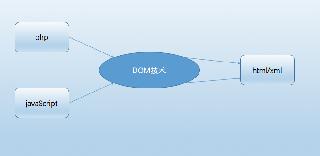文章詳情頁
Java程序的編碼規范(3)
瀏覽:146日期:2024-07-03 09:26:15
內容: Java程序的編碼規范(3)作者:李小敏 本文選自:IBM DW中國 2002年08月21日 ● 構造函數 接下來是構造函數,它應該用遞增的方式寫(比如:參數多的寫在后面)。 訪問類型 ('public', 'private' 等.) 和 任何 'static', 'final' 或 'synchronized' 應該在一行中,并且方法和參數另寫一行,這樣可以使方法和參數更易讀。 publicCounterSet(int size){ this.size = size;} ● 克隆方法 如果這個類是可以被克隆的,那么下一步就是 clone 方法: publicObject clone() { try { CounterSet obj = (CounterSet)super.clone(); obj.packets = (int[])packets.clone(); obj.size = size; return obj; }catch(CloneNotSupportedException e) { throw new InternalError('Unexpected CloneNotSUpportedException: ' + e.getMessage()); }} ● 類方法 下面開始寫類的方法: /** * Set the packet counters * (such as when restoring from a database) */protected finalvoid setArray(int[] r1, int[] r2, int[] r3, int[] r4) throws IllegalArgumentException{ // // Ensure the arrays are of equal size // if (r1.length != r2.length || r1.length != r3.length || r1.length != r4.length) throw new IllegalArgumentException('Arrays must be of the same size'); System.arraycopy(r1, 0, r3, 0, r1.length); System.arraycopy(r2, 0, r4, 0, r1.length);} ● toString 方法 無論如何,每一個類都應該定義 toString 方法: publicString toString() { String retval = 'CounterSet: '; for (int i = 0; i
標簽:
Java
相關文章:
1. python如何寫出表白程序2. .NET一行代碼實現GC調優,讓程序不再占用內存3. 學點簡單的Django之第一個Django程序的實現4. springboot攔截器Interceptor的使用,你都了解嗎5. OpenJDK源碼解析之System.out.println詳解6. IntelliJ IDEA 2020最新激活碼(親測有效,可激活至 2089 年)7. 如何利用pyinstaller打包Python程序為exe可執行文件8. PHP程序員簡單的開展服務治理架構操作詳解(一)9. vue3使用vue3-print-nb實現區域打印功能10. Java Integer及int裝箱拆箱對比
排行榜

 網公網安備
網公網安備